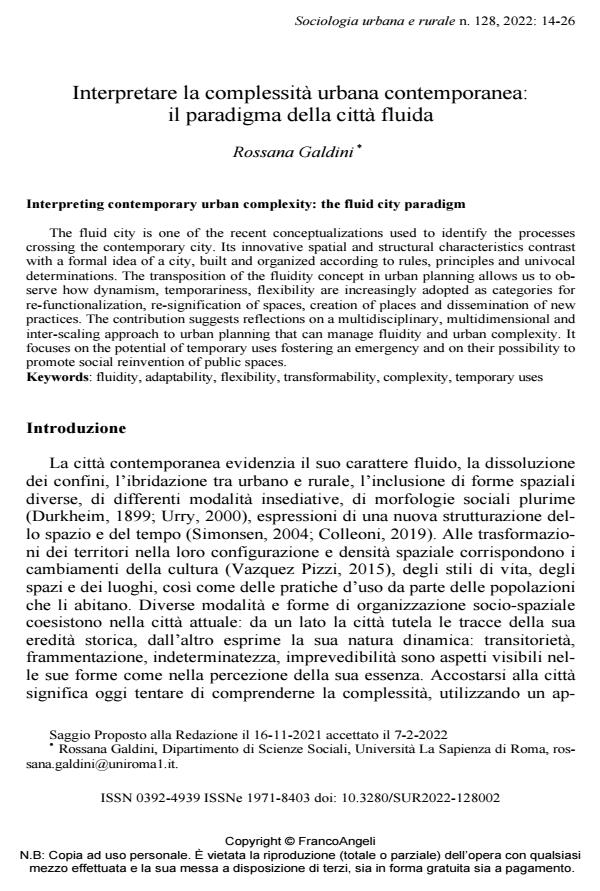Interpreting contemporary urban complexity: the fluid city paradigm
Journal title SOCIOLOGIA URBANA E RURALE
Author/s Rossana Galdini
Publishing Year 2022 Issue 2022/128
Language Italian Pages 13 P. 14-26 File size 170 KB
DOI 10.3280/SUR2022-128002
DOI is like a bar code for intellectual property: to have more infomation
click here
Below, you can see the article first page
If you want to buy this article in PDF format, you can do it, following the instructions to buy download credits

FrancoAngeli is member of Publishers International Linking Association, Inc (PILA), a not-for-profit association which run the CrossRef service enabling links to and from online scholarly content.
The fluid city is one of the recent conceptualizations used to identify the processes cross-ing the contemporary city. Its innovative spatial and structural characteristics contrast with a formal idea of a city, built and organized according to rules, principles and univocal determina-tions. The transposition of the fluidity concept in urban planning allows us to observe how dynamism, temporariness, flexibility are increasingly adopted as categories for re-functionalization, re-signification of spaces, creation of places and dissemination of new prac-tices. The contribution suggests reflections on a multidisciplinary, multidimensional and inter-scaling approach to urban planning that can manage fluidity and urban complexity. It focuses on the potential of temporary uses fostering an emergency and on their possibility to promote social reinvention of public spaces.
Keywords: fluidity, adaptability, flexibility, transformability, complexity, temporary uses
- Urban informality and users-led social innovation: Challenges and opportunities for the future human centred city Rossana Galdini, Silvia De Nardis, in Futures 103170/2023 pp.103170
DOI: 10.1016/j.futures.2023.103170 - Crisis, Conflict and Celebration Rossana Galdini, Silvia De Nardis, pp.275 (ISBN:978-981-97-9718-9)
Rossana Galdini, Interpretare la complessità urbana contemporanea: il paradigma della città fluida in "SOCIOLOGIA URBANA E RURALE" 128/2022, pp 14-26, DOI: 10.3280/SUR2022-128002